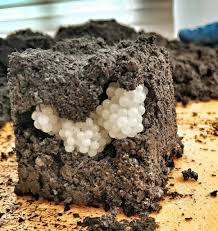
One bright morning, as I was tending to my garden, something unusual caught my eye—a small cluster of smooth, white spheres nestled in the soil. They sparkled faintly in the sunlight, perfectly round, almost like miniature pearls scattered across the earth. At first, I thought they might be decorative beads or leftover craft materials, but their subtle translucence and soft glow suggested something far more curious. Kneeling down, I felt a mix of fascination and unease—what could these tiny orbs possibly be?
Gently digging them out with gloves, I discovered they were soft and slightly squishy, with a gelatinous texture that made me pause. Peering closer, tiny dark specks could be seen inside, as if something was quietly waiting to hatch. A wave of concern ran through me. Could these be eggs? And if so, of what? The thought that they might belong to insects or other creatures lurking in my garden sent a shiver down my spine. Curiosity pushed me to take a few inside for closer inspection under stronger light.
After a quick search online, my suspicions were confirmed: they were snail eggs, sometimes called snail caviar. My heart sank. While snails may seem harmless at first glance, they can wreak havoc in gardens, devouring plants and leaving behind trails of slime. Even more concerning, certain species can carry parasites that pose health risks to humans. Suddenly, the delicate spheres no longer seemed innocent—they were a hidden threat, quietly waiting to multiply.
Determined to protect my garden, I returned outside and carefully eliminated the entire cluster with boiling water, ensuring no hatchlings would survive. I meticulously checked the surrounding soil for any other clusters, aware that prevention was key. From that day forward, my approach to gardening changed: I learned to look more closely, to respect the hidden intricacies of nature, and to remember that danger isn’t always obvious. Sometimes, it’s soft, white, and hiding quietly right beneath our feet.





